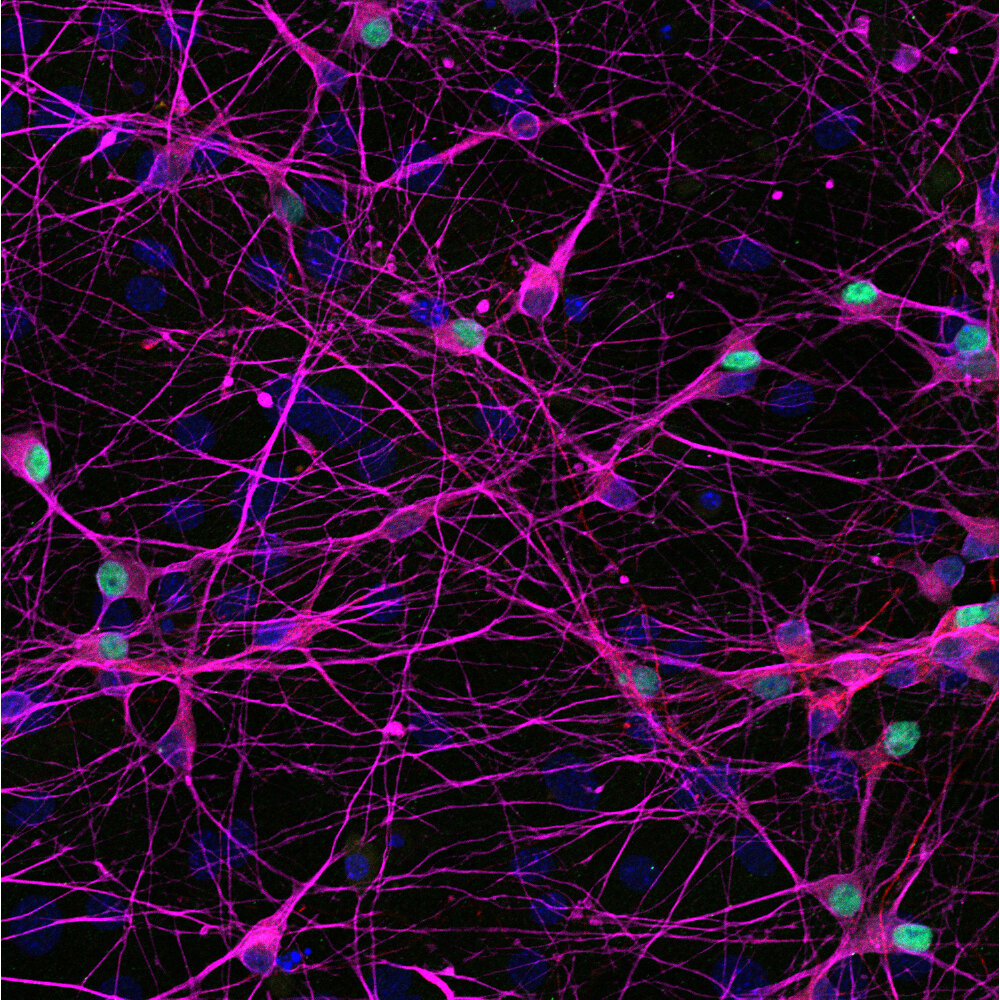
Disruption of RNA and protein trafficking in neurodegeneration
RNA-binding protein dynamics in ALS/FTD
Our laboratory focuses on the pathogenesis and treatment of amyotrophic lateral sclerosis (ALS) and frontotemporal dementia (FTD), devastating neurodegenerative disorders with considerable genetic and pathologic overlap.
Although the causes of ALS and FTD are diverse and only partially understood, approximatly 97% of ALS cases and 45% of FTD cases show nuclear clearance and cytoplasmic aggregation of the essential RNA-binding protein TDP-43.
The cause of TDP-43 mislocalization in disease remains unknown, but abundant evidence suggests that TDP-43 disruption is involved in the pathogenic cascade of disease. There is also growing genetic evidence for disruption of other RNA-binding proteins in ALS and FTD, highlighting a critical role for RNA-protein interactions in neuronal biology.
We are particularly interested in how nucleocytoplasmic transport and RNA processing intersect to regulate the localization and physiological functions of RNA-binding proteins.
Research
Mechanism and regulation of TDP-43 nucleocytoplasmic transport
Current studies in the lab focus on: (1) the mechanism of TDP-43 nuclear export; (2) the role of RNA in regulating TDP-43 localization; and (3) the development of RNA-based approaches to promote TDP-43 nuclear localization.
To that end, we utilize immortalized cell lines and primary neurons to monitor nucleocytoplasmic transport using automated high-content imaging and confocal microscopy. In addition, we apply biochemical, biophysical, and imaging methods, including RNAseq, proteomics, FRAP, and FRET, to analyze protein-protein and protein-RNA interactions.
In parallel, we are working to identify and test novel therapeutic strategies for promoting TDP-43 nuclear retention in patient-derived neurons, Drosophila, and mouse models.
Recent publications
Hayes LR and Kalab P. Emerging therapies and novel targets for TDP-43 proteinopathy in ALS/FTD. Neurotherapeutics, 2022;19,1061-1084.
Team
Lindsey Hayes, MD, PhD
Principal Investigator
Associate Professor of Neurology
JHU School of Medicine, Brain Science Institute - Profile
Petr Kalab, PhD
Co-Investigator
Research Associate Professor
JHU Whiting School of Engineering
Currently recruiting!
Now recruiting at all levels - technicians, graduate students, and postdoctoral fellows.
Interested candidates should send a CV to:
contact@hayeslab.science














